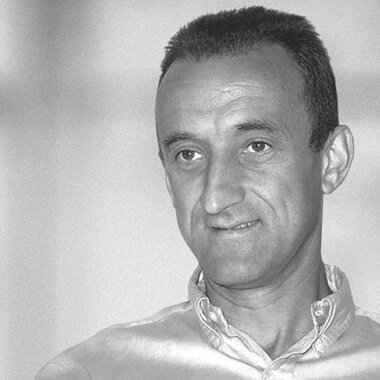Dr. Luc Teyton, MD, PhD
Researchers in the Teyton lab at the renowned Scripps Research Institute in La Jolla, CA, primarily focus on autoimmunity by investigating the association between human leukocyte antigen (HLA) molecules and various immune conditions using genomics, transcriptomics and proteomics. By approaching research one simple question at a time, Teyton is able to look broadly at a scientific hypothesis instead of limiting himself to a particular technique or discipline.

Coupling immunology and microfluidics: How one lab explores the immune system one T cell at a time
There is an art to moving from complex scientific concept to simple question. How can we connect a single molecule to a disease state? How can our understanding of a disorder help us discover effective immunosuppressive drugs? What can we model in the laboratory that might impact the efficacy of a new vaccine? Luc Teyton, MD, PhD, has routinely pursued answers to scientific questions like these throughout his career as a clinical immunologist-turned-professor who now challenges his students to do the same.
Putting these basic questions into practice, researchers in the Teyton lab at the renowned Scripps Research institute in La Jolla, CA, primarily focus on autoimmunity by investigating the association between human leukocyte antigen (HLA) molecules and various immune conditions using genomics, transcriptomics and proteomics. By approaching research one simple question at a time, Teyton is able to look broadly at a scientific hypothesis instead of limiting himself to a particular technique or discipline. “Rather, we collaborate with specialists in various fields to perform whatever is needed to give us different parts of an answer,” he says.
Teyton’s pioneering approach to taking on any technique that makes a project successful has led the lab to adopt an array of methods from biochemistry, structural biology and biophysics to genetics and cell biology. However, a fundamental challenge in the study of the immune system involves isolating and analyzing small numbers of cells. As Teyton explains, “Sampling humans dictates the approaches you can use. Human cells are accessible from only three origins: saliva, blood and biopsies, which provide a very limited number of immune cells.” Teyton and his team have spent years developing enrichment tools and techniques that would allow them to isolate the needle in the haystack, such as the major histocompatibility complex (MHC) tetramer that enables labeling and sorting of single CD4 T cells based on their antigen recognition. “That being said, we usually end up with ten to a hundred cells of interest from each sample, leaving us no choice but to have recourse to single-cell approaches.”
The microfluidics entourage
Traditional manual analysis of single T cells to determine sequence and structure equated to a daunting amount of work and dismal efficiency. It took one postdoctoral fellow five years to sequence 250 cells from diabetic mice – work that now represents two experiments and two weeks of work, with efficiency of cell recovery reaching 60–70%, thanks to microfluidics.
Standard BioTools™ microfluidics technologies have transformed the time and workload of these single-cell experiments with automation and conservation of sample and reagents. Single-cell isolation and sample preparation upstream of next-generation sequencing and real-time PCR analysis can be done using the C1™ system, and bulk cell and tissue analysis is easily completed on the Biomark™ HD system. Researchers rely heavily on Biomark systems to quantitatively examine series of 96 genes of interest in single cells. They can also comprehensively sequence T cell receptor chains from the same cell to analyze gene expression patterns after preparation on the C1 system. “We have been impressed by the quality of the data generated by C1 with a depth of interrogation that was on average beyond 10,000 genes per cell,” adds Teyton.
Teyton describes as an example how microfluidics has allowed his lab to perform an in-depth analysis of the early anti-insulin response in the nonobese diabetic (NOD) mouse, a model of type 1 diabetes (T1D). Now the group can work on translating these observations to humans, particularly at-risk populations like first-degree relatives of a newly diagnosed T1D patient. Teyton hopes that his lab’s data on activation of an anti-insulin T cell response will explain the progression of autoimmunity in real time and offer an improved monitoring tool to replace tools that are unreliable and poorly predictive. Upon further study, the same approach could potentially be used to evaluate the efficacy of immune intervention during the preclinical phase of disease.
Integration of microfluidics across hypotheses
In addition to C1 and Biomark HD systems, Teyton’s lab recently acquired the Juno™ system, which can process and prepare all Standard BioTools microfluidic devices. The lab will incorporate the Juno system into a project that extensively uses the C1 system for scRNA-seq, where they will examine immune cell populations in colonic biopsies of patients with inflammatory bowel diseases.
Teyton would like to translate some of his approaches to the clinic for use in diagnosis and therapeutic monitoring. “To be successful, we have to validate the genomics data obtained using the [Standard BioTools] suite of instruments by proteomics data to address protein expression for each cell we analyze,” he explains. “Ultimately, our success will depend on the efficiency of our collaboration and the integration of data from each platform. I believe that single-cell analysis has a huge potential in the clinic, but I am also aware that this potential is matched by challenges of a similar magnitude.”
For Research Use Only. Not for use in diagnostic procedures. Patent and License Information: www.standardbio.com/legal/notices. Trademarks: www.standardbio.com/legal/terms-and-conditions. Any other trademarks are the sole property of their respective owners. ©2025 Standard BioTools Inc. All rights reserved.